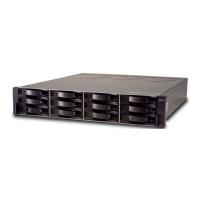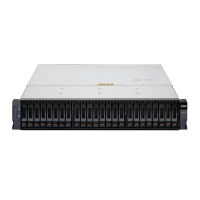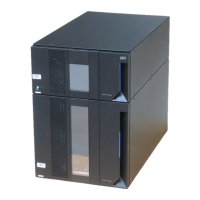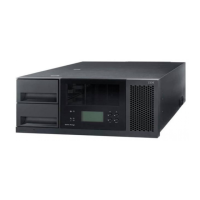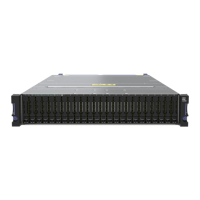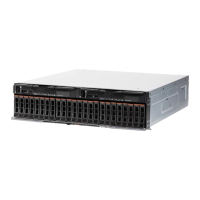v Power failures – If a total power failure occurs, the unit automatically performs a
power-up recovery sequence without operator intervention after power is
restored.
Table 13. DS5020 ac power requirements
Low Range High Range
Nominal Voltage 90 to 136 VAC 198 to 264 VAC
Frequency (Hertz) 50 to 60 Hz 50 to 60 Hz
Idle Current 3.53 A
a
2.08 A
b
Maximum Operating Current 3.71 A
a
2.04 A
b
Maximum Surge Current 5.04 A
a
2.67 A
b
a.
Typical voltage: 120 V ac, 60 Hz, assumes 72% power-supply efficiency and 0.99 power
factor
b.
Typical voltage: 240 V ac, 60 Hz, assumes 72% power-supply efficiency and 0.99 power
factor
Power and site wiring requirements
The storage subsystem uses wide-ranging redundant power supplies that
automatically accommodate voltages to the ac power source. The ac power
supplies operate within the ranges specified in Table 13. The ac power supplies
meet standard voltage requirements for both domestic (inside USA) and
international (outside USA) operation. They use standard industrial wiring with
line-to-neutral or line-to-line power connections.
The agency ratings for the DS5020 storage subsystem are 6 amps at 100 VAC and
2.5 amps at 240 VAC. These are the overall maximum operating currents for the
DS5020 storage subsystem with ac power supply and fan unit CRUs.
AC power recovery: After a total ac power failure, after normal power is restored,
the storage subsystem performs power-up recovery procedures automatically
without operator intervention.
Power cords and receptacles: The storage subsystem ships with two jumper
cords used to connect to the rack PDU. You must purchase the power cords that
are appropriate for use in a typical outlet in the destination country. See
Appendix D, “Power cords,” on page 187 for more information.
Heat output, airflow, and cooling
See “Airflow and heat dissipation” on page 24 for heat output, airflow, and cooling
specifications.
Note: In general, disk subsystem reliability tends to decrease as the ambient
temperature of the environment in which it is being used increases. The
ambient temperature in the immediate area of the disk enclosure unit must
be kept near 22° C (72° F), or lower, to provide better reliability.
When racks that contain many storage subsystems are to be installed together, the
following requirements must be met to for the storage subsystems to be cooled
adequately:
v Air enters at the front of the rack and leaves at the back. To prevent the air that
is leaving the rack from entering the intake of another piece of equipment, you
26 IBM System Storage DS5020 Storage Subsystem: Installation, User’s, and Maintenance Guide
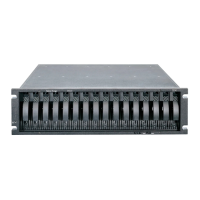
